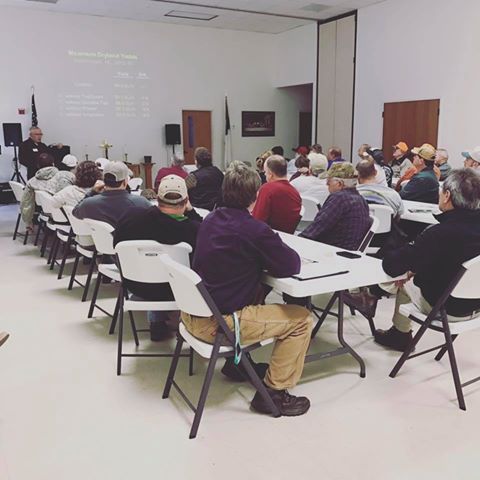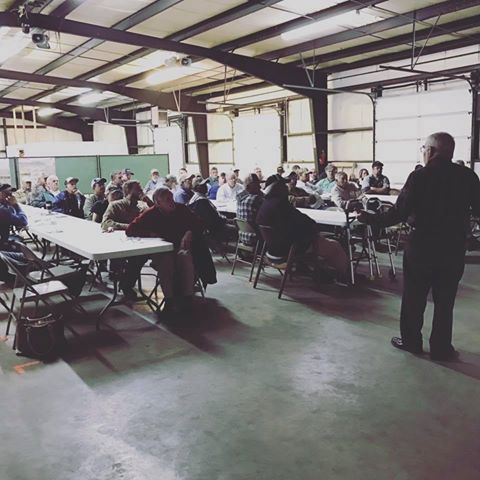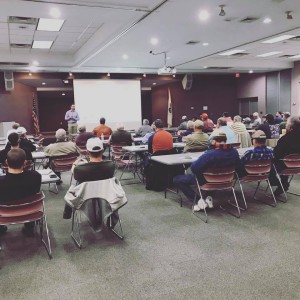Meeting season is here and we have spent the last few weeks traveling around the state visiting with growers, listening to our top-notch Extension Specialists, and eating good BBQ.
These county grain meetings are probably the best way to hear the about the latest research conducted at NCSU last season. Researchers provide data and recommendations that you can use to make the best decisions for your operations in 2017. If your county hasn’t held it’s annual grain meeting yet, I strongly encourage you to attend!
If you happened to miss a meeting or just need a refresher, here are a few important takeaways for you to consider.
Agronomy – Jim Dunphy
- Variety selection is key. Planting the right variety at the right time so plants get 3 feet tall and lap the middles is essential to maximizing yields.
- Narrower row spacing can greatly increase yields (especially in a high-yielding environment). In a high-yielding environment, a row spacing of 20 increased yield by 7 bu/ac compared to 30 in rows.
Disease Management – Lindsey Thiessen
- Nematodes are our nemesis. Proper crop rotation is one of the best tools we have to manage nematode populations.
Weed Management – Wes Everman
- Timeliness is essential for control. Regardless of what weed you are fighting, getting a timely application out (when pigweeds are less than 4 in – that’s the size of a credit card!) is critical to achieving desired control levels.
- Keep eyes open for PPO resistance. There are some populations of Palmer and ragweed that have been identified as resistant to PPO’s. PPO’s are one of the last POST emergence options we have for soybeans. If you see a population you suspect is resistant contact your county extension agent. Also, continue to rotate and/or mix modes of action to help prevent the development of resistance.
Insect Management – Dominic Reisig
- We must choose the right tool for the job. Selecting the proper insecticide for the problem you have is key. In the case of corn earwom control, pyrethroids are cheap and provide control of some caterpillars (corn earworm but not tobacco budworm) as well as some true bugs (stinkbug) but they also kill many natural enemies. On the other hand, caterpillar-specific products (Blackhawk, Intrepid, Prevathod) are almost always effective on caterpillar populations and preserve more beneficial, but they are pricey and will not kill true bugs. Determining what kind of insect populations you have is critical to choosing the right tool for the job.
Fertility – Carl Croizer
- In season tissue sampling can be used to determine nutrient uptake. While NC growers typically do an excellent job of soil testing, few growers actually tissue sample in season. Tissue sampling can be a way to see what nutrients the plant is taking up from the soil and what is lacking. In season correction is more difficult, but by knowing what is limited this year, you can do a better job of planning a fertility program for next year.
Check out our newly updated Grower Resources Portal for more information on each of these topics and good luck as you plan for the 2017 season!










